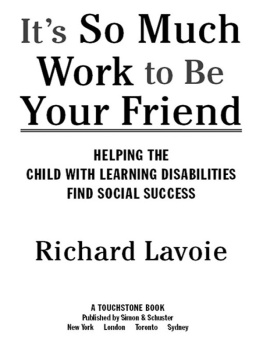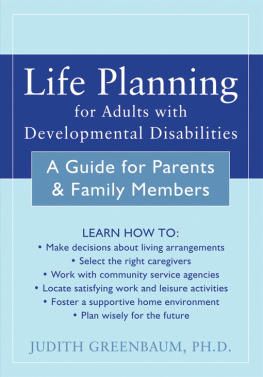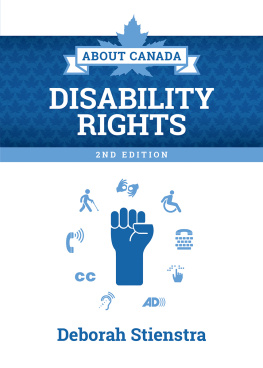About the Authors
Richard V. Burkhauser is the Sarah Gibson Blanding Professor of Policy Analysis in the department of policy analysis and management and a professor in the department of economics at Cornell University. He is an adjunct scholar at the American Enterprise Institute. His research focuses on how public policies affect the economic behavior and well-being of vulnerable populations. He has published widely on these topics in journals of demography, economics and gerontology as well as public policy. He is immediate past president of the Association for Public Policy Analysis and Management.
Mary C. Daly is vice president and head of microeconomic research at the Federal Reserve Bank of San Francisco. She is the director of the Center for the Study of Income and Productivity at the bank. Her research focuses on the micro- and macro-economic impact of public policies. She has published widely on these topics in journals of demography, economics, and health. Daly previously served on the Social Security Advisory Board's technical panel and is a fellow in the National Academy of Social Insurance.
Acknowledgments
This book is based on over three decades of research by the authors, either jointly or with othersmost especially Philip de Jong and Leo Aartsin the growing area of the economics of disability. We thank our research colleagues and others, particularly Monroe Berkowitz and John Burton Jr., who have contributed to this developing literature. We especially thank our three anonymous referees for their careful reading of the first complete draft of this manuscript. We are grateful to Bruce Meyer and other participants at the 11th Annual Joint Conference of the Retirement Research Consortium, as well as John Bound, Nicole Maestas, Dave Stapleton, and other participants at the 2010 and 2011 Spring Meetings of the Michigan Retirement Research Center for their comments on later versions of the manuscript. We also are indebted to Andrew Houtenville, Katherine Thornton, Robert Weathers, and David Wittenburg for providing data for the book. We thank Jeff Larrimore and especially Joyce Kwok for exceptional research assistance and are grateful to Anita Todd for editorial assistance.
Finally, Richard V. Burkhauser thanks Henry Olsen for being a true sounding board for his early ideas on the book and providing him with an office at the American Enterprise Institute during the first semester of his sabbatical. Burkhauser also thanks Mark Wooden for providing him with an office in the Melbourne Institute of Applied Economic and Social Research at the University of Melbourne and leaving him alone to write during the second semester of his sabbatical.
Data Appendix
Sample Definitions
The sample we use includes all individuals in the March Current Population Survey data who do not have a household member in the military and who are not residing in group quarters. Working-age individuals refers to all individuals between the ages of twenty-five and fifty-nine. The working-age population is often defined as persons ages eighteen to sixty-four in published statistics. We use a narrower definition because of the large number of persons ages eighteen to twenty-four whose primary activity is education and the large number of persons ages sixty to sixty-four who are retired. Unless otherwise indicated, the sample used in all tables and figures is the working-age sample.
In most cases, households in the CPS contain one family. For households that contain multiple families related by blood or marriage, we treat subfamilies as separate families for the identification of family structure. Single mothers are defined as women who are not currently married and who are subfamily heads who live with their own never married child(ren) under eighteen. This accounts for important changes in living arrangements, such as the rise in single mothers living with their own parents. As London (1998) notes, prior to 1984 the CPS surveys did not properly account for the household relationships of children living in multigenerational households, producing an undercount of the number of single mothers due to misidentification of those who lived with their parents. To reduce the effect of undercounting this key family type in the early portion of our sample, we applied Londons correction to pre-1984 data. If there is a child in the household classified as other relative of head and a woman who meets Londons criteria (at least fifteen years older than the child and unmarried), then that woman is considered a single mother in our sample.
The population with disabilities includes all individuals who report having a health problem or a disability which prevents work or which limits the kind or amount of work they can do. While the use of a work limitation variable to capture the working-age population with disabilities is controversial, the CPS is the only data set that provides a consistent set of questions that allows long-term evaluations of this population. For that reason, it has been widely used in the economics literature to determine the employment and economic well-being of working-age people with disabilities. See, for example, Acemoglu and Angrist (2001); Autor and Duggan (2003); Bound and Waidmann (2002); Burkhauser, Daly, and Houtenville (2001); Burkhauser, Daly, Houtenville, and Nargis (2002); Burkhauser, Houtenville, and Rovba (2009); Daly and Burkhauser (2003); Hotchkiss (2003, 2004); Houtenville and Burkhauser (2005b); and Jolls and Prescott (2005).
In 2008, after a decade of study, the Bureau of Labor Statistics introduced a new six-question sequence of questions into the CPS-Basic Monthly Survey (BMS) for the purpose of determining the working-age population with disabilities. This set of six questions does not include the traditional work-limitation question which the March CPS-Annual Social and Economic Supplement (ASEC) has used since 1981 and which we use in the statistics we report above and in the rest of the book. Burkhauser, Houtenville, and Tennant (2011), using data from both the BMS and ASEC components of the CPS, show that levels of employment and income of this six-question-based disability population are substantially higher and their SSDI- and SSI-program participation is substantially lower than those outcomes when using the work-limitation question to determine this population. This is the case in large part because these six questions only capture 63 percent of the CPS population that reports receiving SSDI or SSI benefits. Once the work-limitation question is added, the new seven-question-based disability population captures 92 percent of the SSDI-SSI population in the CPS. For a discussion of the controversy surrounding the use of CPS data to capture the working-age population with disabilities see Hale (2001), Burkhauser, Daly, Houtenville, and Nagris (2002), and Burkhauser, Houtenville, and Tennant (2011).
The vulnerable populations compared in this book are single mothers, men with disabilities, and women with disabilities. Disabled single mothers are double counted, because they are included both as single mothers and as women with disabilities.
Business Cycles
The beginning and ending years of a business cycle are somewhat arbitrary. Rather than define them directly by changes in macroeconomic growth, we define them by peaks in median household income, which, in general, lag macroeconomic growth. The peak year is defined as the highest median household income year within a given business cycle, and the trough year is defined as the lowest median household income year within a given business cycle. Our findings are not sensitive to reasonable changes to the peak years we chose to compare. We also provide NBER-defined recession periods in appropriate figures.










